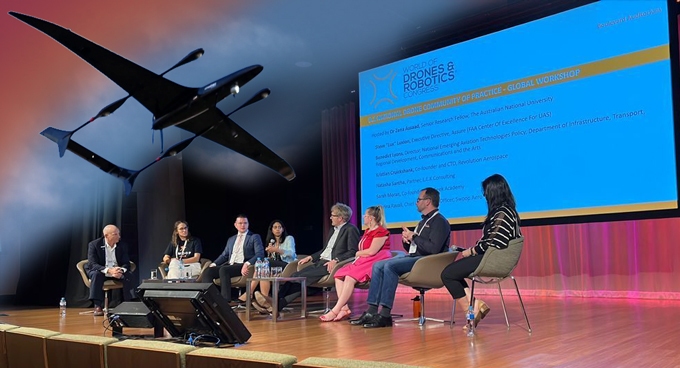A new community is joining forces to coordinate drone research in Australia to ensure drone technologies can be effectively integrated in Australian society.
The familiar hum of drones is becoming increasingly commonplace. Australians are using drones for everything from fast food deliveries to bushfire response efforts. Drone technology will soon show levels of complexity that are not covered by our existing ways of thinking, working and regulating. As drones become more capable, this will increase the potential of positive applications and industry development in this sector.
The Australian National University (ANU) is progressing this national conversation by establishing a community of practice for drone and advanced air mobility (AAM) research.
The community brings together expertise from the Australian Government, industry, aviation sector, and universities to lead the development of a national research agenda. The group will look to understand the body of research that’s already out there and explore where the industry is headed.
The community of practice seeks to plug research gaps relevant for Australia to identify and address some of the emerging policy, regulatory and technology challenges associated with drones and AAM. Its focus will be on facilitating engagement and outcome-focused collaboration and stewarding research efforts that respond to, inform and contribute to Australia’s emerging technology policies.
Researchers in the ANU School of Engineering aerospace cluster are currently leading work around the assurance and certification of drone autonomy. This will help policymakers to better understand the technologies that we are dealing with.
“We have identified some of the key challenges in this space and are developing methods to address them,” says ANU aerospace expert Dr Zena Assaad. ”We’re looking at how to manage the diversity and complexity of autonomous systems.”
“The ANU community of practice will support and inform coordinated drone and AAM research, contributing to positive policy outcomes that benefit Australia and our communities,” says Benedict Lyons, Director, Emerging Aviation Technologies Policy, Department of Infrastructure, Transport, Regional Development, Communications and the Arts.
The current members of the UAS and AAM community of practice include:
- Dr Zena Assaad, The Australian National University
- Benedict Lyons, Department of Infrastructure, Transport, Regional Development, Communications and the Arts
- Patricius Heusser, Department of Infrastructure, Transport, Regional Development, Communications and the Arts
- Renee Bartolo, Department of Climate Change, Energy, the Environment and Water
- Steve Luxion, Assure, FAA’s Centre of Excellence for UAS Research
- Marion Hiriart, Swoop Aero
- Kristian Cruickshank, Revolution Aerospace
- Natasha Santha, L.E.K Consulting.
The community of practice will also look to strengthen collaborations between Australia and global leaders in this space, and opportunities to amplify Australia’s voice in the global emerging aviation technologies arena.
ANU has recently achieved significant progress towards this goal, after becoming an Affiliate University of the US Federal Aviation Administration (FAA) Center of Excellence for UAS. As an affiliate member, ANU will contribute subject matter expertise on aviation technologies at the international level.
“Through these national and global partnerships we can improve the sharing of research, collaboration, and coordination on uncrewed aircraft systems. The goal is to ultimately create safer skies, both here in Australia and around the world,” says Dr Assaad.

